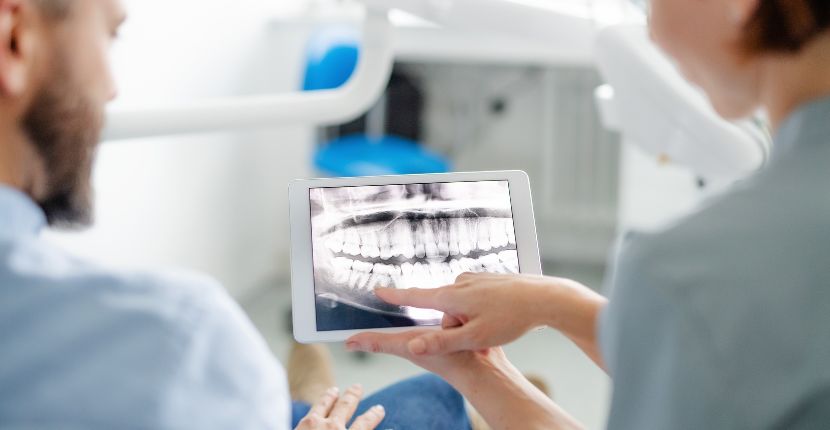10:00 AM to 8:30 PM (Mon - Sat)
10:00 AM to 2:00 PM (Sunday)
Are Dental X-Rays Safe?

Are Dental X-Rays Safe?
Dental X-rays aren’t a novel concept anymore! It was long invented in the year 1895 by German physicist Wilhelm Conrad Röntgen. Initially used for checking the bones, the X-rays made their way into dentistry, and since then, there has been no looking back! Dental X-rays are considered a boon for dentists as they provide them with a detailed view of teeth, gums, and jawbones, revealing hidden problems that can't be seen by the naked eye. This insight offers accurate diagnoses, thus helping in making an effective treatment plan. With any medical procedure involving radiation, it’s natural to wonder about the safety of this technique. Through this blog, we aim to share practices that involve X-rays and understand if they are safe.
Why Are Dental X-Rays Necessary?
Dental X-rays are important because they allow dentists to see beyond the surface. It provides a great level of accuracy, due to which some major issues are addressed promptly, preventing more serious problems down the line.
- Cavities: X-rays can reveal cavities hiding between teeth or beneath fillings long before they become visible or cause pain.
- Gum disease: X-rays can show bone loss and other signs of gum disease, even in its early stages.
- Infections: Abscesses and other infections are clearly visible on X-rays.
- Impacted teeth: X-rays help identify impacted teeth, like wisdom teeth, that may be causing problems.
- Cysts and tumors: X-rays can detect abnormal growths in the jaw.
- Developmental abnormalities: X-rays can help diagnose developmental issues in children.
When Are Dental X-Rays Needed?
The frequency of dental X-rays depends on your individual needs. Factors like your oral health history, current condition, and age all play a role in determining how often X-rays are required.
- New patients: A full set of X-rays is usually taken for new patients to establish a baseline and assess overall oral health.
- Regular checkups: For patients with good oral health, bitewing X-rays (showing the upper and lower teeth together) may be taken every 1-2 years to monitor for cavities.
- Children: Children may need X-rays more frequently as their teeth and jaws are still developing.
- Specific problems: X-rays are crucial for diagnosing and treating specific issues, such as wisdom teeth growth, gum disease, impacted teeth, or oral injuries.
Addressing Safety Concerns
Dental X-rays use a very low level of radiation. Advancements in technology, particularly the shift to digital X-rays, have minimized the radiation dose. Here are some additional safety measures your dentist might take during dental X-rays:
- Lead aprons: A lead apron is placed over your chest and lap to shield your vital organs from radiation.
- Thyroid collars: A thyroid collar may sometimes be used for added protection.
- Careful technique: Dentists are trained to use the correct methods to minimize radiation exposure.
Age Considerations
While dental X-rays are generally safe for all ages, some extra precautions may be taken for children and pregnant women.
- Children: Children are more sensitive to radiation due to their developing tissues. Dentists take extra care to limit the number of X-rays and use the lowest possible radiation dose.
- Pregnant women: While dental X-rays are considered safe during pregnancy, especially with proper shielding, many dentists prefer to postpone non-urgent X-rays until after delivery as a precaution.
Conclusion
Dental X-rays are a safe and vital tool for maintaining optimal oral health. The benefits of early detection and accurate diagnosis outweigh the minimal risks associated with the low levels of radiation used. If you have any concerns about dental X-rays, don't hesitate to discuss them with your dentist.


